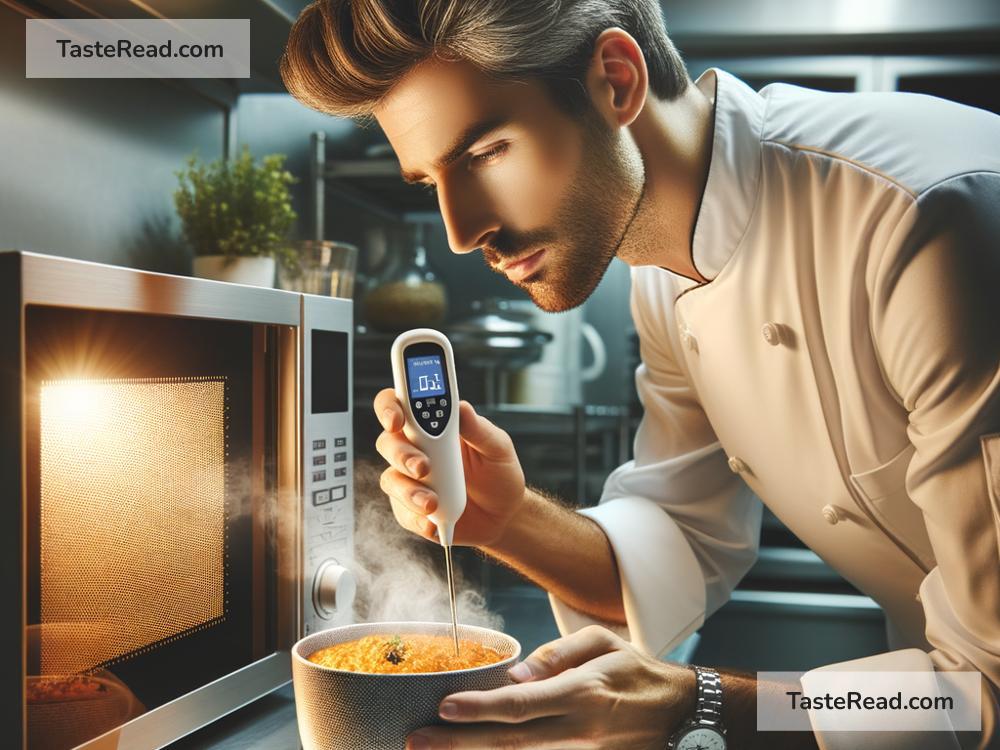The Science of Cooking with Radiation: Techniques and Tips
Cooking is both an art and a science. While we often view it as mixing ingredients and heating them until they transform into delicious meals, the deeper truth is that many fascinating scientific processes are at work. One such process is cooking with radiation—an efficient and modern way to prepare food. In this article, we’ll explore the science of cooking with radiation, touch on its techniques and applications, and provide helpful tips you can use in your kitchen.
What Is Cooking with Radiation?
Cooking with radiation sounds rather technical and intimidating, but chances are, you’re already doing it at home without even realizing it. Radiation refers to the transfer of energy through electromagnetic waves. These waves heat food by either exciting its water molecules (microwave radiation) or converting its surface into heat energy (infrared radiation).
Common appliances that cook food using radiation include:
- Microwave ovens: These cook food using microwave radiation to heat water molecules inside the food.
- Broilers and grills: These use infrared radiation to create intense heat for cooking and browning food.
- Toasters and toaster ovens: They also rely on infrared radiation to toast and bake items.
- Convection ovens with radiant heat: These combine radiation with circulating hot air to cook food evenly.
How Does Radiation Cook Food?
To understand how radiation cooks your food, it’s useful to picture how energy interacts with food molecules:
-
Microwave Radiation: Microwaves excite water molecules in your food, causing them to vibrate quickly. This movement creates heat, which cooks the food. One key aspect of microwaves is that they heat the food from the inside out, since the waves penetrate several inches into food.
-
Infrared Radiation: Think of infrared radiation as intense heat energy focused on the surface of the food. When you broil or grill meat, the infrared energy browns the surface while gradually heating the inner layers. This is why steaks often get a nice crust when grilled or broiled, while remaining juicy inside.
Both microwave and infrared radiation cook food without direct contact. This makes them different from conduction cooking methods, like frying or sautéing, where heat is transferred by touching a hot pan.
Types of Cooking with Radiation
Now that we understand how radiation works, let’s dive deeper into common cooking techniques that use it. Here are three ways radiation is applied in cooking:
-
Microwave Cooking: Microwaves are great for reheating leftovers, boiling water, or steaming vegetables. They’re fast and energy-efficient, making them a staple in most kitchens. However, their uniform heating means they may not brown or crisp food like other methods.
-
Broiling and Grilling: When you broil food, you place it close to an open heat source (like the heating element in your oven) that produces infrared rays. This method is excellent for achieving caramelization, crispy exteriors, and deep flavors for meats, vegetables, and even desserts. Grilling is similar but uses radiant heat from a fire or gas flame, often combined with conduction from grill grates.
-
Baking with Radiant Heat: Toaster and convection ovens rely on radiant heat to cook food. When baking cookies or heating a slice of pizza, the radiant energy evenly heats the food while circulating air ensures consistent results.
Tips for Cooking with Radiation
Cooking with radiation requires some adjustments to get the best results. Here are some practical tips that will make your dishes turn out better:
1. Use the Right Cookware in the Microwave
Microwave ovens work best with materials like glass, ceramic, and microwave-safe plastic. Metal cookware should be avoided, as it can cause sparks and damage the appliance.
2. Avoid Overcooking in the Microwave
Microwaves heat food very quickly, so overcooking can make your meal rubbery or dry. Start with shorter cooking intervals, stir the food to check even heating, and add more time only if necessary.
3. Position Food for Broiling and Grilling
Place food close to the heat source (but not too close) for optimal browning. If grilling, keep an eye on the flare-ups from dripping fats to avoid burns or uneven cooking.
4. Rotate Food for Even Heating
Both microwaves and broilers can leave hot spots in food. Rotate or flip the food halfway through cooking to make sure everything is cooked evenly.
5. Experiment with Browning in Toaster Ovens
Toaster ovens combine radiant and convective heat to brown food beautifully. Use these ovens for smaller dishes that benefit from crisp and golden exteriors, like baked casseroles, fries, or cookies.
6. Monitor Food Closely
Because radiation cooks food quickly and efficiently, it’s easy to overcook or burn your meal. Keep a close eye on your food, especially when broiling or grilling.
The Advantages of Cooking with Radiation
Cooking with radiation brings many benefits. It is fast, convenient, and energy-efficient, which makes it ideal for everyday meals. Microwaves save time, grills add smoky flavors, and broilers create crisp textures—all using clever forms of energy transfer.
Nonetheless, radiation cooking has limitations. Microwaves don’t brown or crisp food, and radiant heat is less effective for large, dense foods that need extended cooking. These quirks highlight the importance of using the right appliance and technique for each dish.
Final Thoughts
Cooking with radiation blends modern technology with traditional cooking methods to create delicious meals with less time and effort. Whether you’re reheating leftovers in the microwave, broiling a steak, or baking pizza in a toaster oven, understanding how radiation works can elevate your cooking game.
By following the tips shared above and experimenting with various appliances, you’ll master the art of radiation cooking in no time. Science may be behind the scenes, but it’s your creativity that brings every meal to life! Happy cooking!


